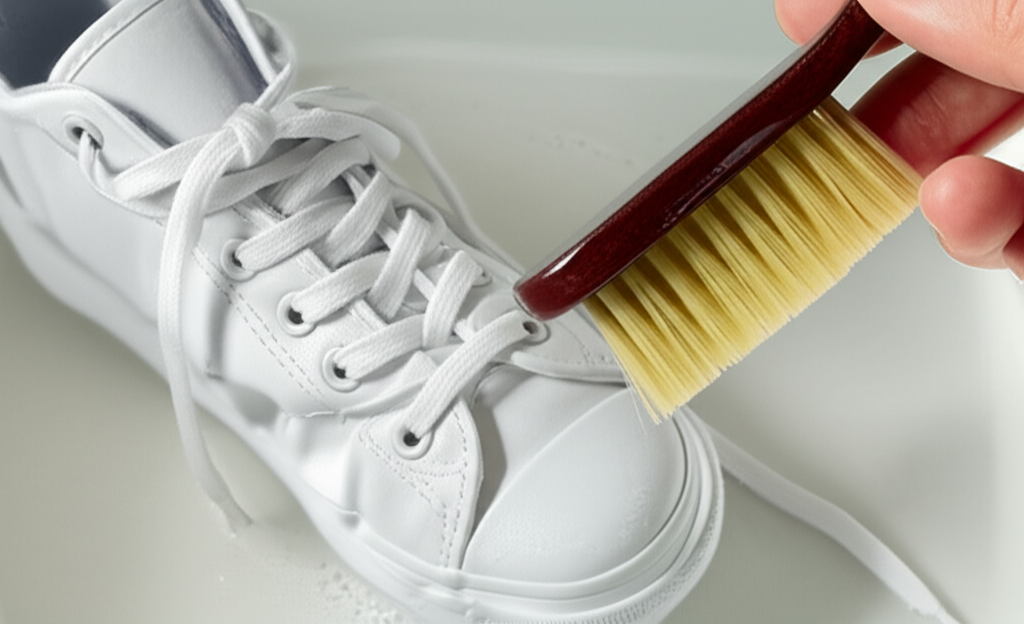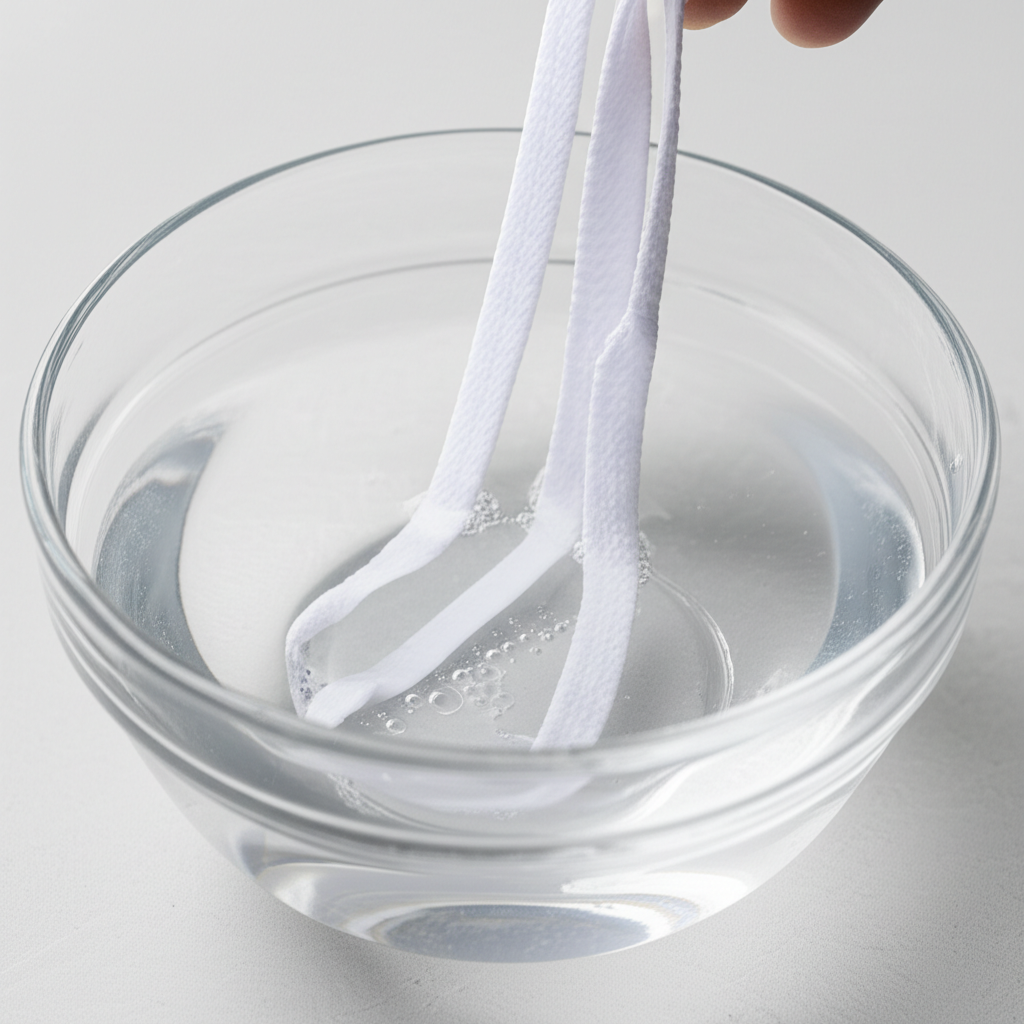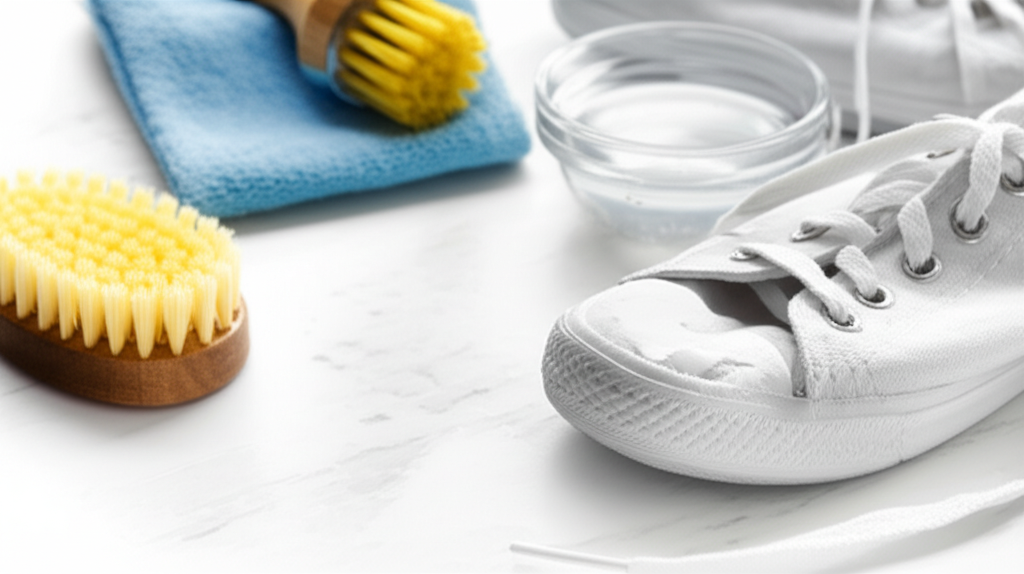What can clean shoelaces? The best method involves a gentle soak in warm, soapy water followed by a light scrub and air dry. This simple approach works for most common shoelace materials, restoring their look without damage.
Key Takeaways
Soak laces in warm, soapy water for effective cleaning.
Gently scrub out tough stains with a brush.
Rinse thoroughly to remove all soap residue.
Air dry completely to prevent mildew and preserve material.
Machine washing is an option for sturdy laces.
Spot clean for quick touch-ups on minor dirt.
You’ve probably noticed them: those once-pristine white laces now sporting a dull grey hue, or perhaps a stubborn grass stain from a weekend adventure. Keeping your shoes looking their best often comes down to the details, and shoelaces are a crucial part of that picture. Many people wonder, “What can clean shoelaces?” and often feel overwhelmed by the thought of meticulous shoe cleaning. It can seem like a chore, and you might worry about damaging them. But the truth is, cleaning your shoelaces is surprisingly simple and incredibly rewarding. A little effort can make your favorite sneakers look brand new again. Ready to bring your laces back to life? Let’s dive into the easiest and most effective ways to get them sparkling clean.
The Best Method: A Gentle Soak and Scrub
For the vast majority of shoelaces, from standard cotton to synthetic blends, a simple, hands-on approach yields the best results. This method is gentle, effective, and requires minimal supplies you likely already have at home.
Gathering Your Cleaning Supplies
Before you begin, collect these essential items:
A small bowl or basin: Large enough to hold the laces submerged.
Warm water: Not boiling, just comfortably warm to the touch.
Mild detergent: Dish soap or a gentle laundry detergent works well. Avoid harsh chemicals.
An old toothbrush or soft-bristled brush: For scrubbing away grime.
A clean towel: For patting laces dry.
Optional: Baking soda or a stain remover: For tougher stains.
Step-by-Step Cleaning Process
Follow these easy steps for remarkably clean shoelaces:
1. Remove the Laces: Carefully unlace your shoes. This is the perfect opportunity to inspect the eyelets and the shoe itself for any wear and tear.
2. Pre-Rinse (Optional but Recommended): Briefly rinse the laces under cool water to remove loose dirt and debris. This prevents them from turning the wash water into mud.
3. Prepare the Soaking Solution: Fill your bowl with warm water. Add a small amount of mild detergent – just enough to create a few suds. Too much soap can be hard to rinse out.
4. Submerge and Soak: Place the shoelaces into the soapy water. Ensure they are fully submerged. Let them soak for at least 15–30 minutes. For very dirty laces, you can extend this time to an hour or even overnight.
5. Gentle Scrubbing: After soaking, take one lace at a time. Use your old toothbrush or soft brush to gently scrub away any remaining dirt or stains. Focus on the areas that are particularly grimy. You can also rub the laces against each other.
6. Tackle Stubborn Stains: If you encounter a particularly stubborn stain (like grass, mud, or grease), you can create a paste of baking soda and water and apply it directly to the stain. Let it sit for a few minutes before gently scrubbing. Alternatively, a dab of a reputable shoe-specific stain remover can be effective. Always test stain removers on an inconspicuous area first if possible.
7. Rinse Thoroughly: This is a crucial step. Drain the dirty water and refill the bowl with clean, cool water. Rinse the laces thoroughly, squeezing them gently to remove all soap residue. Repeat rinsing until the water runs clear and there are no more suds. Soap left behind can attract dirt faster and potentially damage the lace fibers over time.
8. Pat Dry: Gently squeeze out excess water from the laces. Lay them flat on a clean towel and pat them dry. Avoid wringing them out too aggressively, as this can stretch or damage delicate fibers.
9. Air Dry Completely: This is the most important part of the drying process. Hang the laces somewhere with good air circulation, away from direct heat or sunlight (which can cause fading or brittleness). A clothes drying rack, the back of a chair, or even a shower rod works well. Ensure they are completely dry before re-lacing your shoes. This usually takes several hours, or overnight.
Can You Machine Wash Shoelaces?

Yes, for many types of shoelaces, machine washing is a convenient option. However, it’s essential to do it correctly to avoid damaging both the laces and your washing machine.
When Machine Washing is a Good Option
This method is ideal for:
Standard cotton shoelaces.
Synthetic laces (polyester, nylon).
Heavily soiled laces that require a deeper clean.
When you have many pairs of laces to clean at once.
How to Machine Wash Shoelaces Safely
1. Remove and Pre-Treat: As always, remove the laces from your shoes. Rinse them under water to remove loose dirt. For very dirty spots, a quick pre-scrub with a brush can help.
2. Use a Mesh Laundry Bag: Place all your shoelaces inside a mesh laundry bag or a tied-up pillowcase. This prevents them from getting tangled around the washing machine’s agitator or drum, which can cause damage.
3. Choose the Right Cycle: Select a gentle or delicate cycle on your washing machine. Use cool or warm water, not hot.
4. Add Detergent: Use a small amount of mild laundry detergent.
5. Skip the Dryer: Crucially, do not put shoelaces in the dryer. The high heat can shrink, melt, or weaken synthetic fibers, and can make cotton laces brittle.
6. Air Dry: Remove the laces from the mesh bag and air dry them completely, just as you would with the hand-washing method.
When to Avoid Machine Washing
Delicate Materials: Laces made from silk, satin, or very fine, delicate threads are best cleaned by hand to avoid snagging or tearing.
Specialty Laces: Some performance or fashion laces might have special coatings or constructions that could be compromised by machine washing. Always check the shoe manufacturer’s care instructions if available.
Heavily Embellished Laces: If your laces have beads, glitter, or other attachments, machine washing is risky.
Cleaning Different Types of Shoelaces
While the basic soak-and-scrub method is versatile, some materials benefit from slightly different care.
Cotton Laces
Cotton is durable and absorbs dirt readily. They are generally forgiving with cleaning.
Pros: Easy to clean, durable, readily available.
Cons: Can stain easily, may fray over time.
Best Method: Hand wash or machine wash on a gentle cycle. Warm water and mild detergent are effective. Baking soda is excellent for lifting stains. Ensure they are completely air-dried to prevent mildew.
Synthetic Laces (Polyester, Nylon)
These laces are often found on athletic shoes and are known for their strength and resistance to stretching.
Pros: Durable, quick-drying, resistant to fading.
Cons: Can sometimes develop an “oily” feel from certain dirt, may be susceptible to melting at very high temperatures.
Best Method: Hand wash with warm, soapy water. Machine washing on a gentle cycle is also fine. Avoid harsh solvents. Air dry thoroughly. For greasy stains, a bit of degreasing dish soap can be helpful.
Specialty Laces (Suede, Leather, Reflective)
These materials require a more cautious approach.
Suede Laces: These are rare but exist.
Cleaning: Avoid water as much as possible. Use a specialized suede brush to lift dirt. For tougher spots, a suede eraser or a very slightly damp cloth with minimal water can be used with extreme caution. Always allow to air dry completely.
Prevention: Treat with a suede protector spray.
Leather Laces: These are also uncommon but add a unique touch.
Cleaning: Wipe with a slightly damp cloth. For dirt, use a leather cleaner. Condition them occasionally with a leather conditioner to prevent cracking.
Drying: Air dry away from heat.
Reflective Laces: The reflective material can be sensitive.
Cleaning: Gentle hand washing is best. Avoid aggressive scrubbing on the reflective strips. Use mild soap and warm water.
Drying: Air dry to preserve the reflective properties.
Table: Shoelace Material and Cleaning Suitability
| Material | Hand Wash Suitability | Machine Wash Suitability | Special Considerations |
| :—————– | :——————– | :———————– | :———————————————————- |
| Cotton | Excellent | Good (Gentle Cycle) | Prone to staining, ensure complete drying. |
| Polyester/Nylon | Excellent | Good (Gentle Cycle) | Quick drying, avoid high heat. |
| Suede | Poor (Water Sensitive) | Not Recommended | Use suede brush/eraser, minimal moisture. |
| Leather | Good | Not Recommended | Use leather cleaner/conditioner, avoid soaking. |
| Reflective | Excellent | Fair (Gentle Cycle) | Gentle scrubbing, protect reflective strips. |
| Silk/Satin/Delicate| Excellent | Not Recommended | High risk of snagging/tearing in machine. |
Quick Fixes: Spot Cleaning and Stain Removal

Sometimes, you don’t need a full wash. A quick spot clean can save the day.
How to Spot Clean Shoelaces
1. Identify the Stain: Determine what caused the mark. Mud, grass, food, etc.
2. Gather Supplies: A damp cloth, a small amount of mild soap, and an old toothbrush.
3. Gentle Application: Dampen the cloth slightly. If using soap, apply a tiny drop to the cloth or brush.
4. Targeted Scrub: Gently rub the stained area with the soapy cloth or brush.
5. Wipe Clean: Use a clean, damp cloth to wipe away any soap residue.
6. Air Dry: Let the spot dry naturally.
Dealing with Common Shoelace Stains
Mud: Let it dry completely, then brush off as much as possible before washing.
Grass: A pre-treatment with a stain remover designed for grass or a paste of baking soda and water can help.
Grease/Oil: Use a degreasing dish soap for pre-treatment.
Ink: This can be tricky. Try rubbing alcohol on a cotton swab, testing in an inconspicuous area first. Follow with a gentle wash.
Scuff Marks: Often, these can be scrubbed away with a brush and soapy water.
Pro Tips for Shoelace Care
Regular Maintenance: A quick rinse or spot clean every few weeks can prevent dirt from becoming deeply embedded, making full washes easier.
Separate When Washing: Always wash shoelaces separately from clothes, even in a mesh bag, to prevent lint transfer and potential damage to other items.
Inspect Before Lacing: Before putting clean laces back on, give them a quick once-over for any fraying or weakening. Replace them if they’re too worn.
Storage Matters: If you have multiple pairs of shoes, store them in a way that laces don’t rub against rough surfaces.
Consider Replacement: Sometimes, laces are beyond saving. A fresh pair of laces is an inexpensive way to completely transform the look of your shoes. You can find durable replacements from many shoe retailers or online stores. For example, brands like The Shoelace Factory offer a wide variety of styles and materials.
Frequently Asked Questions (FAQ)
Q1: How often should I clean my shoelaces?
A1: It depends on how often you wear your shoes and how dirty they get. For everyday shoes, cleaning them every 1–2 months or when they visibly appear dirty is a good rule of thumb. Athletic shoes or shoes worn in rough conditions might need cleaning more frequently.
Q2: Can I use bleach on my white shoelaces?
A2: While bleach can whiten, it’s generally not recommended for most shoelaces. It can weaken fibers over time, especially synthetic ones, and can cause yellowing or damage to colored laces. A paste of baking soda and water or a mild oxygen-based whitener is a safer alternative for brightening white laces.
Q3: My shoelaces smell bad. What can I do?
A3: Odor is often caused by bacteria. Soaking laces in warm water with a bit of detergent and a tablespoon of baking soda or white vinegar can help neutralize odors. Ensure they are completely dry afterward, as moisture can encourage bacterial growth. You can also try specialized shoe deodorizers.
Q4: What’s the best way to dry shoelaces?
A4: Always air dry them. Hang them up in a well-ventilated area away from direct heat or sunlight. This prevents shrinking, melting, or weakening of the materials. Never use a clothes dryer.
Q5: Can I use dish soap to clean shoelaces?
A5: Yes, mild dish soap is an excellent and safe option for cleaning most shoelaces. It’s formulated to cut through grease and grime without being overly harsh. Just be sure to rinse thoroughly to remove all soap residue.
Q6: My shoelaces are starting to fray. Can cleaning help?
A6: Cleaning itself won’t fix fraying, but it can prevent further damage. If fraying is minor, a gentle hand wash and careful air drying are best. For significant fraying, it’s usually time to replace the laces to maintain shoe integrity and appearance.
Conclusion
Keeping your shoelaces clean is a simple yet impactful way to refresh your favorite footwear. The best method, a gentle soak and scrub in warm, soapy water followed by thorough air drying, is effective for most materials. For convenience, machine washing in a mesh bag on a delicate cycle is a viable option for sturdy cotton and synthetic laces. Remember to be mindful of delicate materials like suede and leather, opting for specialized care. By following these straightforward steps, you can easily restore your shoelaces to their former glory, extending the life and improving the look of your shoes without breaking the bank. So next time you notice those laces looking a little worse for wear, you’ll know exactly what can clean them – and how to do it best.

